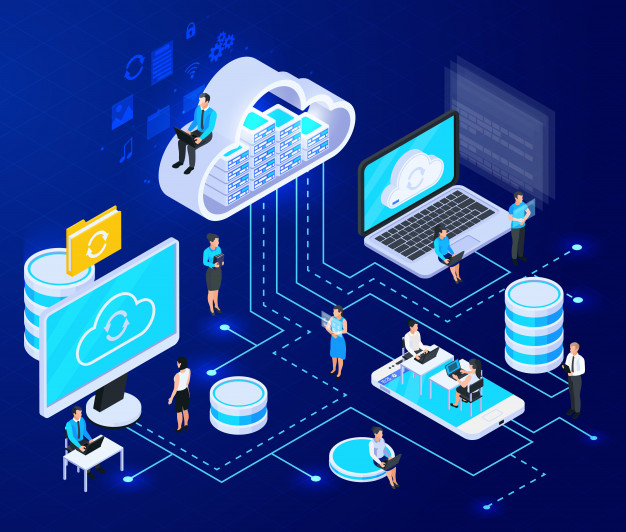The Evolution of Generative AI and Human Creativity: Ethical Concerns and Future Perspectives
3AI November 11, 2024

Featured Article
Author: Bhabani Chatterjee, Capgemini Invent
Generative AI revolutionized notions of creativity — in manufacturing, product design, content creation, and problem-solving across various domains. These advancements not only push human invention further but also open up a new world for enterprises and individuals. Of course, ethical implications abound, but the excitement is undeniable.
The Horizon of Generative AI in This World of Creativity
Technologies like GPT or DALL·E broaden our horizons, creating things previously thought only computers could handle — text, images, music, and even video. Now, they can compose music, write texts, and create artwork like paintings or sculptures at an unimaginable scale and speed. In the near future, humans and AI will work together, reshaping the creative economy and blurring the lines between human and machine-generated content.
Generative AI is revolutionizing industries from entertainment to architecture by speeding up design, sparking innovation, and making creativity more accessible. However, this democratization comes with challenges: questions around ownership, authenticity, and the potential for abuse.
Applications of Generative AI Across Categories
1. Media and Entertainment
Generative AI is revolutionizing media by generating plots, writing scripts, and creating visual effects, cutting down the time required for content creation. Film studios and game developers already use AI for world-building, realistic animation, and enhancing virtual designs. Streaming platforms also personalize content and analyze consumption trends, helping creators target specific audience segments.
In music, AI can compose original tracks or assist with creative ideas. Artists like Taryn Southern and Holly Herndon have already showcased how AI unlocks new creative dimensions through albums created in collaboration with it.
2. Healthcare
Generative AI is transforming healthcare by accelerating drug discovery, personalizing medicine, and aiding diagnostics. AI simulates biological processes and generates new compounds, cutting years off traditional drug development methods. It also designs personalized treatment plans based on genetic profiles, improving patient outcomes.
In diagnostics, AI generates realistic medical imagery, helping doctors with simulations specific to patient conditions, making it indispensable in medical research and practice.
3. Fashion and Retail
The fashion industry is experiencing a digital transformation fuelled by generative AI. AI designs clothing patterns, predicts trends, and personalizes shopping experiences. Virtual garments can be tested in digital environments before physical production, reducing waste. AI has even enabled “metaverse fashion shows,” where designers present creations in a virtual space.
In retail, AI-powered platforms recommend products based on user preferences, enriching the shopping experience. Virtual models can try on clothes digitally, making shopping more interactive.
4. Architecture and Engineering
Generative AI is reshaping architecture and engineering through automated design. AI algorithms generate countless design options based on parameters, allowing architects and engineers to explore various possibilities quickly. Generative design is already being used by companies like Autodesk to optimize structural designs, saving time and resources.
In civil engineering, AI models are helping plan sustainable infrastructure projects, minimizing environmental impacts, and improving resource efficiency. The construction industry benefits from AI’s ability to simulate building materials and dynamics, leading to smarter designs.
5. Marketing and Advertising
Generative AI is revolutionizing marketing with personalized content at scale. AI tools create ad campaigns, generate product descriptions, and write blog posts. They analyze consumer behavior to produce targeted content that resonates with specific demographics, freeing marketers to focus on strategy and innovation.
Beyond text, AI-generated visuals and video are increasingly common in advertising, allowing brands to create tailored visuals quickly, speeding up production timelines.
Generative AI and Its Ethical Implications
While generative AI offers vast opportunities, it also presents ethical challenges that must be addressed to ensure responsible use.
1. Authenticity and Ownership
As AI-generated content becomes indistinguishable from human-made work, questions of authorship and ownership arise. Who owns AI-created art, music, or text? The lack of clear legal frameworks could lead to disputes over intellectual property.
2. Bias and Fairness
Generative AI models are trained on large datasets, which may contain biases. If the data is biased, the AI can perpetuate or amplify those biases. It’s crucial to ensure fairness and diversity in AI outputs to prevent reinforcing harmful stereotypes.
3. Job Displacement
The automation of creative tasks raises concerns about job displacement, particularly in industries like graphic design and copywriting. While AI can augment human creativity, there is a risk it could replace humans in some areas. A balance must be struck between AI enhancement and preserving human creativity to protect jobs.
4. Misuse and Deepfakes
Generative AI also poses risks, particularly in creating deepfakes — hyper-realistic, AI-generated images or videos used to spread misinformation. Such technologies have implications for privacy, trust, and disinformation. Regulatory frameworks are needed to mitigate malicious uses of generative AI.
The Road Ahead: Balancing Innovation and Accountability
Generative AI is a powerful tool for pushing creative boundaries and reshaping industries. However, its deployment requires balancing innovation with ethical responsibility. As we embrace AI’s potential, businesses, policymakers, and society must collaborate to create ethical guidelines, ensure inclusivity, and promote fairness.
Generative AI is not just a tool but a partner in creativity, offering new perspectives. Embracing its possibilities while addressing ethical concerns will shape a future where human creativity and machine intelligence coexist.
Title picture: freepik.com






